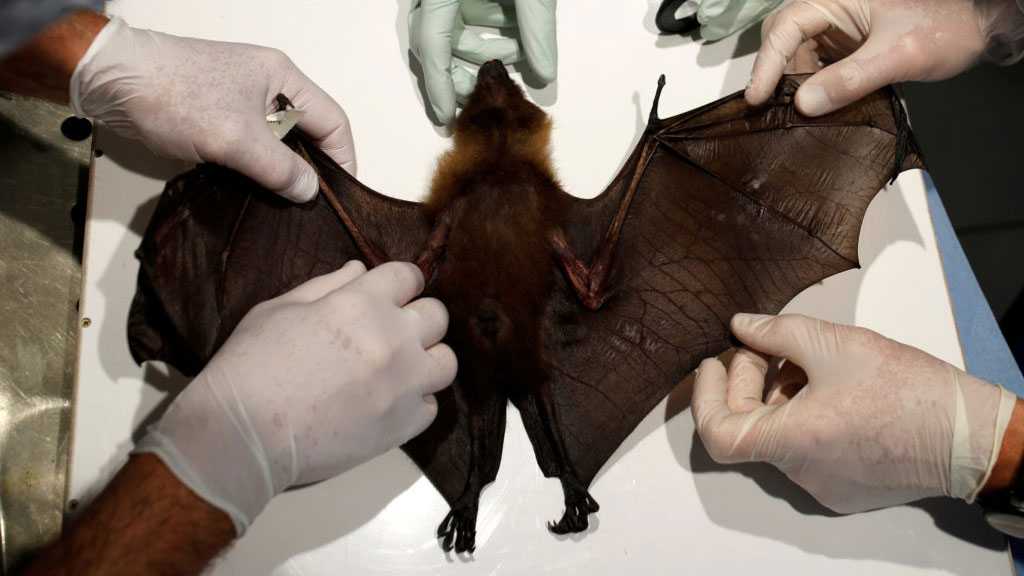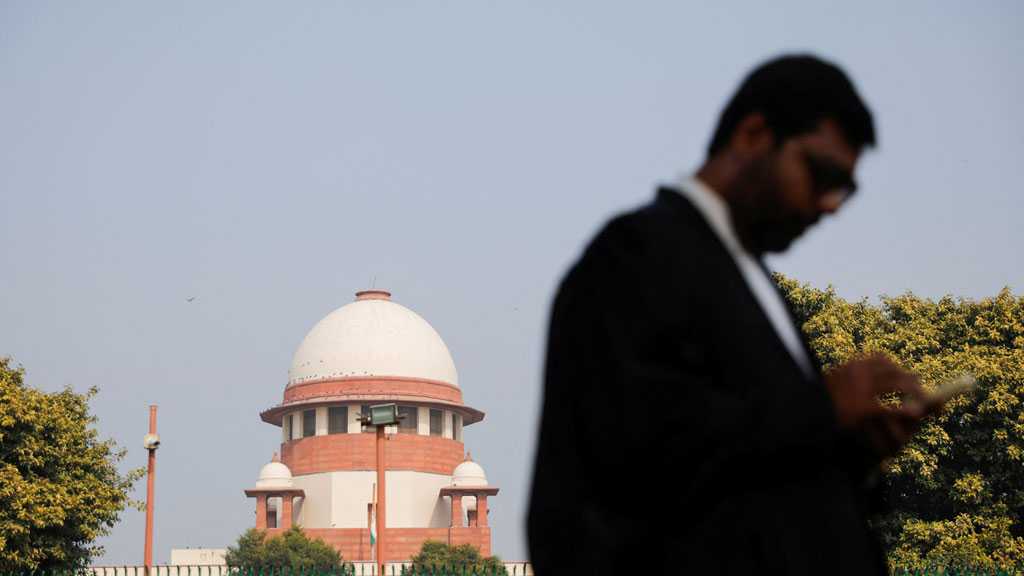
A Deadly New Bat-Borne Virus is Spreading Through Asia

By Staff, RT
The southern Indian state of Kerala recently introduced emergency measures to combat an infectious respiratory disease transmitted by bats – although we’re not talking about COVID-19, but rather the Nipah virus. It was the fourth such outbreak in Kerala since 2018. On this occasion, the state contained the virus within days and limited the fatalities to two, demonstrating why it has one of the best healthcare systems in India.
The Nipah virus [NiV] infection, also called the Nipah virus encephalitis, is named after the Malaysian village of Kampung Sungai Nipah, where it was first found. It is a zoonotic disease that spreads from animals to humans. An outbreak of the virus in Malaysia in 1998 and 1999 started from infected pigs and resulted in 265 cases and 108 deaths. [According to a Kerala health department source, the pig is an intermediary host, transmitting the virus from bat to human.] The strain then spread to Singapore in 1999, leading to 11 infections and one death.
In Bangladesh, the virus has infected 237 people since 2001; 150 deaths were recorded prior to 2011, before cases gradually dropped to zero in 2016. This year, Bangladesh has recorded 11 infections, resulting in eight deaths. In India, the first Nipah outbreak was reported in the city of Siliguri in West Bengal in 2001, where there were 66 cases and 45 deaths.
The first case in Kerala was reported from the city of Kozhikode in the northern part of the state in May 2018. During that outbreak, 21 deaths were registered. Kerala likewise battled outbreaks in Kozhikode in 2019 and Ernakulam in 2021, before new cases appeared this year in Kozhikode.
In Kerala, Nipah is postulated to spread through the consumption of fruit that has been infected by bats. Fruit bats belong to the Pteropodidae family, and survive largely on a diet of fruit which they locate with their sense of smell or by finding the source of the echoes of their own sound.
“Their habit is to fly in long ranges in search of fruit,” C Abdul Latheef, divisional forest officer at Kerala’s Forest and Wildlife Department in Kozhikode, according to RT. “They even fly in a 30km radius in a single day in search of fruit.”
Dr. M. Muraleedharan, national convener of the Indian Medical Association’s Antimicrobial Resistance Committee, said bats carry around 4,000 viruses, including Nipah.
“The virus will live in the body of bats, while it is fatal for other animals,” he said. “[Nipah] is not present in all bats, but in 3% of them. The virus will multiply in the body of each of the 3% and will then spread to others.
“The virus multiplies because of factors like scarcity of food and drinking water; when bats get scared; climate change; and due to pregnancy in female bats. The connection to climate change is an assumption that has to be studied,” he added.
One place the infected bats might have visited during the latest outbreak is farmland owned by one of its victims.
Suffering from severe fever, headache, and fatigue, the 40-year-old M. Haris staggered towards the home of Dr. P. Jyothikumar, a general practitioner in Vadakara, located in Kerala’s Kozhikode district, on September 11. The symptoms did not subside despite treatment at a private clinic and at a Primary Health Centre. Haris, of Ayancheri near Vadakara in Kozhikode, died that day at the Aster Malabar Institute of Medical Sciences [MIMS], a private hospital.
A different patient, E. Mohamedali, a 47-year-old from Maruthonkara near Kuttiadi in Kozhikode, also died. The cause was initially presumed to be pneumonia. However, Mohamedali’s two children, their uncle, and a cousin were brought to Aster MIMS on September 10 with fever, a cough, and breathing difficulties.
A team of doctors contacted the hospital where Mohamedali had died, and it emerged that he had been a caregiver at the same facility where Haris had been admitted. Both had died of the Nipah virus, Union Health Minister Mansukh Mandaviya confirmed. Local authorities also discovered that a large number of bats had been spotted on Mohamedali’s farmland.
The Nipah outbreak was the fourth in Kerala, and even though the virus has been contained with two deaths and six infected, the local health department on Tuesday announced it would continue restrictions in the containment zones in Kozhikode.
Relatedly, Kerala Chief Minister Pinarayi Vijayan told the media on Tuesday that the entire health infrastructure in the state had been involved in containing Nipah.
The Health Department began field surveillance in the region, and according to the minister thousands of samples were tested at Kozhikode Medical College Hospital.
The Union government sent three teams: one for bat surveillance, the second a mobile testing unit to avoid any delay in sending the samples to NIV Pune, and the third for epidemiological assessment.
Containment zones were declared in nine local bodies, several divisions of the Kozhikode Corporation, and in various wards of the Feroke Municipality in the same district. Asha [Accredited Social Health Activist] members visited homes daily to monitor people and collect data. Intensive contact tracing of patients was based on their route maps.
The state had deployed similar methods for COVID-19 management. Movement in the containment zones was restricted and was allowed only for emergencies. Only shops selling essentials were permitted to open, while educational institutions and banks remained closed until the restrictions were lifted.
Kerala had already had practice. From the second outbreak onwards, the state reduced the Nipah mortality rate. In 2019, the infection was detected in a 23-year-old man in Ernakulam, who survived. The 2021 outbreak, however, claimed the life of a 12-year-old boy. Kerala’s contact tracing and strict surveillance of people on the patient’s contact list have resulted in the effective containment of the disease.
Such strict surveillance does not exist in many other states, where it might have gone undetected. Kerala invests heavily in the public health sector, resulting in the effective management of disease outbreaks. The state has a multi-level hospital system under the government, starting from the Primary Health Centre to the Community Health Centre, and from Taluk [an administrative unit of a number of villages] to District Hospitals. The state has medical colleges in 12 of 14 districts.
Kerala has generally been a good health service provider. Along with two other southern states, Tamil Nadu and Telangana, it emerged as among the top performers in the NITI Aayog’s annual health index during the COVID pandemic. NITI Aayog is the apex policy think tank of the Indian government. Its annual health index measures the performance of states and Union Territories [UTs].
Kerala also emerged top among the larger states in the country for overall performance on health indicators in the NITI Aayog report in 2019. In addition, the state has the lowest infant mortality rate in the country.
For the Nipah confirmation test there are two virology labs in Kerala – at Kozhikode Medical College Hospital and at the Institute of Virology at Thonnakkal, in Thiruvananthapuram. The Medical College has boasted a BSL-2 [Biosafety level 2 that covers all laboratories that work with agents associated with human diseases] facility since September 2021.
Additionally, a team of medical experts prepared a Nipah protocol for the state after the 2018 outbreak and revised it in 2021.



